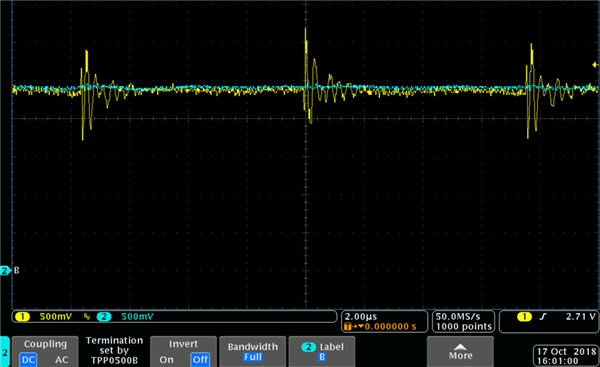We implemented a low pass Sallen Key filter with a cutoff frequency of 4.8 Mhz, with balance R=330 and C=100pF. With a bandwidth of 5.5Mhz, significant filtering was not expected, however the OPA340 seem to make signal worse the input noise.
Blue = input to Sallen Key, Yellow = Output of Sallen Key
We changed to frequency cutoff to 33.9kHz
Yellow = input to Sallen Key, Blue = Output of Sallen Key
While lower the cutoff frequency improved the response a lot it was still not as good a simple single order buffered RC low pass filter
RC low pass filter with cutoff frequency set to 159 kHz
Yellow = input to filter, Blue = Output of filter
Our testing of the OPA340 Sallen Key filter resulted in unexpected disappointing results any thoughts on how we can improve the results?
Thank you,
Scott





